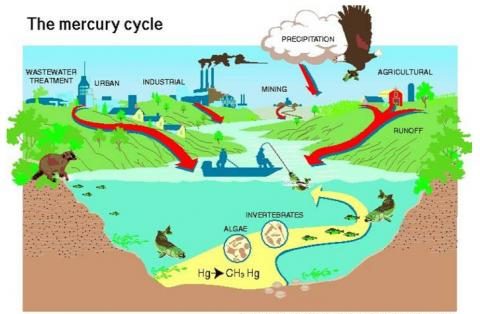- Client: European Environment Agency (EEA)
- Implementation period: October, 2017 - March, 2018 (Completed)
- Geographic coverage: Europe
- Theme: Environment
- Topic:
- Experts: Jurgen Vermeulen, Tycho Smit
Assessing the levels of mercury pollution in Europe and directions for improvement
Mercury is a heavy metal that has negative impact on the health of natural ecosystems and human beings, if present in high concentrations. Although mercury occurs naturally in some places, it is released into the environment at an increasing through several industrial activities including fossil fuel combustion and the production of metals and chlor-alkali. Once released into the environment, it stays around for a long time, and as a consequence it accumulates in the environment.
In this project led by TNO, the aim was to provide the EEA with inputs for a report on this topic as well as the next issue of the State Of the Environment Report (SOER) to be published in 2020, regarding the current status of mercury pollution in and releases to Europe’s environment. In order to do this an in-depth literature review will be performed. The project delivered a report that summarises the current state of mercury in the European environment, the way in which it creates impacts on human health and what the EU can do to mitigate its effects.

The main observations from this study were as follows:
Current uses of mercury:
- The largest uses of mercury in the EU is for chlor-alkali production and dental amalgams.
- Globally Artisanal Small-scale Gold Mining (ASGM) is the largest contributor to mercury consumption.
Mercury releases into the environment:
- Global mercury emissions have recently skyrocketed, with the main sources of emissions being ASGM and the use of solid fuel combustion power plants.
- The EU however, only accounts for 4.5% of global emissions of mercury.
Atmospheric and aquatic pathways:
- Mercury is spread over the globe through the atmosphere and through the oceans.
- Once present in water bodies, mercury is readily converted into organic mercury compounds that are more easily taken up by animals and therefor more dangerous for the health of wildlife and humans.
Impact of mercury on the environment and human health:
- For humans, we know that acute exposure to high mercury levels can have adverse effects on brain development in embryos and infants, and can lead to adult brain, kidney and lung damage.
- Aquatic wildlife in Europe is chronically exposed to mercury, but it is still poorly understood how this impacts on the health and vulnerability of different species.
- Knowledge about human health impacts of chronic exposure to lower mercury concentrations is still limited as well.
Policy instruments addressing mercury:
- On the whole, the EU has made effective policy progress in the area of mercury, reducing its emissions by 74% between 1990 and 2015.
- Further policy action is required in the areas of dental amalgams and solid fuel combustion.
- The Minamata Convention is the first global initiative to systematically address the mercury problem on all fronts.
Mercury pollution in the environment is inherently a global issue. This means that in order to decrease the impacts of mercury in European soil and waters on the health of our ecosystems and humans, a reduction of emissions around the world is crucial. Therefore, the main recommendation from our study is for Europe to keep actively engaged in the global dialogue on mercury and follow theimplementation of the Minamata Convention.